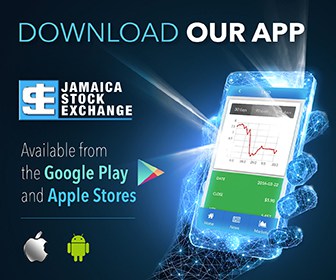COMPANY PROFILE
Pulse Limited was formed in January 1980 by attorneys, Kingsley Cooper and Hilary Phillips to promote concerts and fashion shows. In 1982, the company opened the Pulse Model Agency and staged the first of its Reggae Superjam concert series. Despite promising early years, costly ‘flops’ for its Superjam series and high interest costs on debt-financed assets during the local financial sector meltdown of the mid 90’s created severe financial stress for the Company, which warranted its delisting from the Jamaica Stock Exchange (JSE).
In 1998 operations were consolidated and the Pulse Entertainment Group was formed. Management’s reworked business plan attracted new equity investors including the National Investment Bank of Jamaica that pumped in J$20 million via preference shares. The new-look Pulse Entertainment Group was consequently relisted on JSE June 2006 with principal activities detailed as model management, multi-media and live show production, and sub-letting properties. Chairman of the Board and CEO, Kingsley Cooper, remains at the helm with approximately 77% of ordinary shares outstanding.
ENVIROMENTAL ANALYSIS
Global Industry Classification standard (GICS)[1] places Pulse’s primary activities under the Consumer Discretionary Sector, which encompasses industries that tend to be the most sensitive to economic cycles. In addition to the retail sector, revenues to entertainment related services including media production have empirically exhibited high positive correlation to business cycles.
Global economic developments are therefore critical to Pulse’s business especially since high-energy costs, depressed US housing market, and downturn in employment markets have caused recessionary pressures in industrial markets including the US, which is a key export market. Emerging-market economies such as China and India are expected to maintain strong albeit slower growth, but not enough to prevent global economic growth from retreating to 3.8% in 2008, from 4.7% in 2007[2].
LINES OF BUSINESS
Pulse recognizes revenues from television entitlements[3], market sponsorship, model agency representation, government grants[4], and rental income from sub-letting leasehold properties.
Media Production
Although better known as the Caribbean’s most successful international model agency, Pulse’s profitability is primarily attributed to its media production capabilities. With eight (8) TV titles, which it sells to cable TV, free to air TV and internet broadcasters in local, Caribbean, and North American markets, over 90% of Pulse’s revenues are generated from this business center. Pulse’s media production line is also a high margin business since income from this area is exempted from income tax[5], and filming and editing are done from self-operated facilities. An industry summary of key market characteristics is shown below.
Model Management
Pulse’s roots are found in the fashion industry through talent management, which is based upon obtaining and matching model talent to clientele need including print and television advertising, and runway. Although boasting some of the most internationally successful models icons on its resume, the model agency business is based on an unpredictable process of finding talent in a constantly changing industry, which means future competitiveness cannot be guaranteed.
Notwithstanding, this area is lucrative with the New York Times estimating the fashion industry to be close to US$300 billion and experts indicating that the average successful model earns in the region of US$200,000 a year and top models gets between US$30 million and US$40 million a year. Pulse earns 10 % of total fees paid to models internationally and 36% of total fees paid to models locally. Model management pulls in close to 5% of annual revenues.
Entertainment Production
Despite significant failures in show promotion business via the Superjam series, management believes this line of business is still viable and therefore launched the ‘Rock the World Concert’ last year to merge the Jamaican stage-show culture with modeling. Rock the World was mildly successful but is expected to be developed into another television product.
Rental & Merchandising
Pulse rents premises at Caribbean Fashion Center and Villa Ronai; generates storage fees from facilities at the Fashion Center; and sells fashion items through its CFW store. Marginal revenues accrue to these activities.
The Porter Model analysis below suggests that Pulse operates in a potentially more volatile industry than similar entertainment type firms such as Palace and Supreme Ventures Limited, given higher threat of entry, more intense rivalry, and greater bargaining power among buyers.
|
Key Performance Metrics |
FINANCIAL analysis
|
Diluted EPS +95.12% to $0.80 Revenues +105.15% to $341.01M Net Profits +104. 01% to $222.21M Net Margins -36 bps to 65%
|
The performance indicators to the right highlight Pulse’s success at half-year interval ended December 2007. Net profits of $222.21M (2006: $108.92M) were recorded on revenues of $341.01M. The 105.15% revenue jump primarily reflected growing acceptance of Pulse’s television products, which injected advertising entitlements totaling $291.89M (2006: $153.64M) or 86.00% aggregate revenues for the period. Pulse exchanges its television programming across the Caribbean as well as in the U.S. and U.K. markets for non-cash advertising entitlements.
Costs of $71.42M (2006: $25.03M) were included in operating costs to record the Group’s utilization of these advertising credits. Thus, total operating costs amounted to $117.74M, leaving gross margins still healthy at 65% (2006:66%) to trigger operating profits of $223.27M, an increase of 102.84%. Operating margins reflected a degree of seasonality, likely explained by management’s timing of the use of advertising entitlements, but is expected to revert to levels suggested by 2007. Importantly, the expansion in margins as graphed above, from a low of 9% in 2002 to 34% in 2007, captures Pulse’s transition into the high-margin, media centered entity.
Debt increased $20.08M year-on-year but net finance costs fell 11.36% ($0.14M) to $1.05M, which suggests debt was taken on close to the end of reported period. Finance costs represented less than 1% of revenues and so had little impact on operating outcomes.
Pulse reported zero taxes for the period as it continued to enjoy tax-free status on the media business. Thus, after consideration for finance costs, equity shareholders earned per share profits of 90 cents (2006: 43 cents). Diluted EPS was measured at $0.80 (2006: $0.41), reflecting the potential dilutive impact of convertible preference shares in the company’s capital structure. Net margins reflected trends in operating margins, surfacing at 65% (2006: 66%), but these are also expected to revert to historical levels shown above.
Balance Sheet:
Pulse registered $1.24B in total assets at December 2007 with current assets accounting for $813.34M (52.15%). Current assets comprised $688.58M in advertising entitlement and $57.64M from unexpired sponsorships in kind, which together were 90.14% higher than the sum held a year earlier. These will be used either as part of packages sold to sponsors or for expansion and marketing of new products in the future.
Liquidity, as measured by the current ratio, stood at a hefty level of 19.8X (2006:14.03X). However, when current asset is adjusted for the relatively illiquid nature of advertising entitlements and unexpired sponsorships, current ratio was closer to 1.65X, which still indicated adequate liquidity. Cash & Cash equivalents totaled $30.40M at the end of December 2007, up from $0.08M a year earlier. The growth in cash levels, albeit significantly lagging profitability for the period, was attributable to operating activities that provided $23.05M for the half-year period and $8.55M in loans received in the second quarter.
Long-term loans increased $20.08M to $21.76M but only the $8.55M represented cash inflow, with the remaining $11.53M likely due to the conversion of short-term debt to long-term debt. With short-term debt likely to be cheaper than long term, this move could be interpreted as pending liquidity issues. Meanwhile, shareholder’s equity rose 49% to $1.15B, from $774.76M, on the back of retained earnings that doubled from $375.92M to $752.96M. Long-term to equity was measured at 1.89%, up from 0.22% a year earlier. Return-on-equity was measured at 32.88% for the 12-month period to December 2007, which meant robust real returns for equity investors.
Risk Assessment
The 5-year performance summary shows revenues and profits growing at respective CAGR[6] of 53.17% and 58.82% as the firm expanded it product line and market reach. The Company reinvested most of its earnings thereby allowing equity to move from $83.98M in 2003 to $931.94M at June 2007.
Notwithstanding, there are concerns about earnings quality. Studies have shown that perception about the quality of earnings is reflected in a firm’s stock price, with firms with more transparent earnings having higher market values. In particular, advertising entitlements, which has material implications for the health of the Company, has been deliberately negotiated as a non-cash exchange. While suiting Pulse’s strategic objectives, this method is less transparent and so raises questions about the possibility of earnings management, which in turn reduces earnings quality.
Pulse’s business model is also a source of moral hazard since losses on risky ventures result in tax credits, which can be used to offset tax liabilities. This view is supported by scrutinizing Pulse’s tax reconciliation statements that reveal as much as $56.06M in credits for previous year’s tax losses used to reduce tax paid for FY 2007.
TECHNICAL ANALYSIS
Shares in Pulse have appreciated 188.46% year-to-date as the improved earnings encouraged interest in the stock. Pulse currently trades at its 52-high (7.50) but the technical chart[7] suggests further capital appreciation since the trend line looks to cross the “oversold line” from below.
The graph to the left confirms the price gains since January 2008, but the bar chart (bottom of graph) illustrates that volumes have been thin except in February when Kingsley Cooper sold 7.0M shares. Still, along with Mr. Cooper, the top ten shareholders command approximately 95% of shares outstanding. This limited float of shares in the market will likely translate into more erratic trading patterns driven less by the Company’s fundamentals.
Its beta (0.51) suggests the stock should also track overall market movements. It is therefore noteworthy that the wide gap between the JSE’s long-term moving average (200-days) trend line and the short-term moving average (50-days) suggest bearish conditions over the short-term. Moreover, investors are more likely to be less willing to risk capital in the current inflationary environment.
Projections and Sensitivities
Future earnings should be driven by product and market development with the introduction of four (4) additional TV series/features in the year ahead. Meanwhile, Pulse reported that it reached “close to 400 million people in more than 300 countries for Caribbean Fashion Week through broadcasts on Fashion TV, Paris, as well as its own Caribbean Fashion Weekly TV series”. New markets in Britain, the US, Canada, South and Central America will now be targeted, which bodes well for stronger sponsorships and advertising credits.
Pulse’s push into international markets also coincide with supportive industry developments including the thrust by established cable brands such as Re TV and Tempo to broadcast in the international market. Moreover, technological advances have reduced the costs of replicating and exporting media production further lending support to improved margins.
The integrated nature of Pulse’s operations not only gives management control the supply process but also allows the firm to extract more profits from the value added process. For example, Pulse recruits model talent and produces a reality type TV production through its Caribbean Model Search. This integrated approach allows the firm to earn commission as a model agency and advertising entitlements as a motion picture producer while minimising costs through use of its own production facilities and filming at Villa Ronai.
Meanwhile, finance costs should near zero over coming quarters as the Group recently redeemed its preferences shares. The Company also vows to eliminate debt from its capital structure as it moves to become fully self-sufficient. This should complement efforts to increase cash flow, including current strategies to negotiate cash as part of advertising entitlements.
Villa Ronai & Suites Developments represents a long-term value proposition. Although not expected to come on stream before 2010, Villa Ronai will be converted into luxury suites and destination spa targeted at the international celebrity fashion and entertainment market. The project is expected to be funded by the soon to be announced rights issue and will eventually generate revenues in the form of spa operation, rental and sale of some units.
Notwithstanding, these projections are subject to downside risks including continued pressure affecting the global fashion industry stemming from declining forecasts for retail sales, despite likely positive growth in the emerging markets; campaigns against anorexia and allegations of inhumane labor conditions by recognized manufacturers, which could trigger boycotts of major fashion lines; as well as intensified competition on the local and regional fronts as more agencies spring up to compete with Pulse.
Meanwhile, intense competition in the more lucrative markets, including the US, may lead to less than desired outcome since these markets are proliferated with fashion-related programming and reality Type TV shows.
Pulse’s integrated model nature also means that operating risks significantly concentrated. The Group is also heavily dependent on its tax exemption, which is scheduled to expire June 2015.
Similarly, there is a real possibility of thinning advertising credits driven by reduced advertising/media spend by local companies coping with tightening economic conditions. In addition, there will likely be limited sponsorship for live events stemming from Red Stripe’s recent decision to eliminate sponsorship of live events that do strictly comply with its no violence code.
Hence, over the next four quarters to December 2008, operating revenues are conservatively projected to reach $1.47B, an increase of 53.20%, which is also in line with its 5-year sustainable CAGR. The production efficiencies should allow operating margins to tend toward 40.99%, up from 35.00% last year. Reduced use of debt, in line with balance sheet restructuring toward zero-debt, should lessen finance costs. With the bulk of profits expected to accrue to the media produ
ction business, Pulse is not expected to record tax expenses in the year ahead. As such, net profits of $602.55M (EPS: $2.29) is expected for the four quarters to December 2008, an increase of 58.82%, which is also predicted by CAGR trends.
VALUALTION APPROACH
Although operating cash flow is deemed a more reliable estimate of sustainable growth, especially when issues related to earnings quality exist as is the case with Pulse, operating cash flows would not be appropriate given the firm’s deliberate strategy to use non-cash exchange for its products. Given the significance of advertising entitlements in current asset, as well as the fact that these represent significant future income generating capacity, book value can be used as proxy of fundamental value. Moreover, the book value is the most reliable proxy of the present value of Pulse’s growth opportunities given that the firm is still in its expansion stage.
Therefore, using an average of Pulse’s P/BV and its peer group, it is expected that Pulse will trade close to 2X of its book value. With expected book value of $6.92 at December 2008, this translates into a share price of $13.85.
Diversification Strategy:
In keeping with the portfolio approach to equity investing, the matrix[8] below shows that Pulse offers risk diversification when held with negatively correlated equities such as LAS, LOJ, SGJ, CWJA and NCBJ.
While this expected return (84.67%) prompts a recommendation to ‘BUY’, investors are advised to compare the projected return against their required return, which should be adjusted to reflect the risks stemming from the lack of board independence since global best practices suggest that the Board Chairman should not be CEO; concerns about earnings quality and transparency; the absence of dividends, and lack of market liquidity. Interested investors are also advised to hold this investment for 2-3 years in order to maximize potential upside.
[1] This GICS sector is made up of those manufacturing and service industries that tend to be the most sensitive to economic cycles. Its services segment includes hotels, restaurants and other leisure facilities, media production and services, and consumer retailing
[2] Peterson Institute of Research
[3] Advertising entitlements are advertising credits which are used by the holder to place advertising in the media, in lieu of cash, subject to the terms of the agreement by which the entitlements are generated.
[4] Occasional grants for event promotion
[5] Pulse enjoys tax exemption as a recognized motion picture producer under the Motion Picture Industry (Encouragement) Act
[6] Compound Annual Growth Rate
[7] The Commodity Channel Indicator was the only instructive technical chart at the time of analysis
[8] Bloomberg Software





